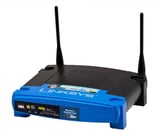You know those two plastic boxes that sit on your desk? The ones that have flashing lights to indicate they are doing their job? They are about the same shape and size, but what is the difference? And why do you need both?
You probably know that one's called a modem, the other is called a router, and they're both involved with getting you on the Internet and connecting you to the world. But, most people aren’t able to explain the difference between the two; that’s where we come in!
Although they're working hand in hand to get you connected to your favorite websites, they're doing totally separate jobs. So what is it that they do?
The modem connects to a cable/wire from the outside, bringing Internet data (email, You  Tube videos, Google search results, files) into your home from all over the world. A different wire that goes from your modem to your computer, delivering your Internet requests and activities to your computer and monitor. What you see is what you asked for. Thanks, modem!
Tube videos, Google search results, files) into your home from all over the world. A different wire that goes from your modem to your computer, delivering your Internet requests and activities to your computer and monitor. What you see is what you asked for. Thanks, modem!
Now, you could use the Internet by plugging your modem into your computer. The reason why this is not the best decision is because while modems are useful and an integral part of getting the World Wide Web on your screen, they don’t provide much Internet safety. When you are only using a modem, you put your computer at risk for viruses and hackers. That’s where the router comes into play!
A router takes the digital signal from your modem and shares it with other Internet ready  devices in the house. You now have a computer network at home. The router also adds security by modifying the IP address on your computer(s). Your IP address is a set of numbers that is specific to your device and allows you to access the internet and allows other devices to communicate with yours. Doing this makes it harder for hackers to invade your network.
devices in the house. You now have a computer network at home. The router also adds security by modifying the IP address on your computer(s). Your IP address is a set of numbers that is specific to your device and allows you to access the internet and allows other devices to communicate with yours. Doing this makes it harder for hackers to invade your network.
A wireless router allows you to connect to your Internet at home with any wireless device, such as a laptop, Smartphone or iPad. You can learn how to lock down your wireless network with our previous blog post.
